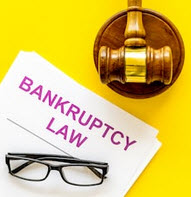How An Indiana Bankruptcy Can Save Your House

After a brief down period, home foreclosure rates are rising again. Even worse, Indianapolis is basically at the center of one of the largest foreclosure hot spots in the country. Legally, most lenders can begin pre-foreclosure proceedings after just one missed payment. Once this process begins, most banks immediately stop taking partial payments. So, as the months drag on, homeowners get further and further behind.
Distressed homeowners have a few options in these cases. Indiana is a non-judicial foreclosure state, so lenders do not need a judge’s permission to take your house. An attorney can request a temporary restraining order, but the homeowner must show cause. Even if successful, a TRO is only a temporary fix. Chapter 13 bankruptcy is usually a better option. Bankruptcy offers both short and long-term solutions.
The Automatic Stay
In most cases, Section 362 of the Bankruptcy Code takes effect when homeowners file their voluntary petition. The automatic stay halts all adverse action, including:
- Foreclosure,
- Repossession,
- Wage garnishment,
- Lawsuits, and
- Harassing collection activities.
Typically, the automatic stay remains in effect for as long as the bankruptcy is pending. In Chapter 13 cases, that could be up to five years.
There are some exceptions, mostly for people who have filed bankruptcy within the previous year. Additionally, the judge may allow moneylenders to bypass the automatic stay. But to do so, they must essentially show that the collateral is in imminent danger. If the homeowner threatens to burn down the house, the bank could probably resume foreclosure proceedings. But anything short of that is probably insufficient.
The Automatic Stay does more than prevent foreclosure. It also forces the bank to accept the homeowner’s income-based repayment plan. A Chapter 13 gives debtors up to five years to catch up on mortgage delinquency and other past-due payments on secured debts. As long as the debtor sticks to the plan, the mortgage bank cannot say anything.
If the mortgage catch-up payment is unsustainable, most debtors can switch to Chapter 7 without penalty. These individuals get a financial fresh start within a few months instead of a few years.
Lowering the Amount Due
If there is a dispute as to the amount owed, most bankruptcy judges will refer the matter to mediation. There, the bank has a duty to negotiate in good faith. In plain English, the moneylender must make sacrifices to get a deal done. Additionally, homeowners do not go it alone in mediation. Their attorneys are with them every step of the way.
In some cases, a strip-off may be possible as well. Assume Hilda Homeowner has a $100,000 mortgage and a $10,000 home equity loan against a house that is worth $100,000. The home’s value is not high enough to secure both loans. So, the home equity loan is an unsecured debt. That puts it alongside credit cards, medical bills, and other unsecured debts. Most likely, the bankruptcy judge will discharge Hilda’s HELOC. That result could save her hundreds of dollars a month.
Connect with Assertive Lawyers
Bankruptcy may save your house today and tomorrow. For a free consultation with an experienced bankruptcy attorney in Chicago, contact the Bentz Holguin Law Firm, LLC. After-hours appointments are available.
Resource:
attomdata.com/news/market-trends/foreclosures/july-2018-u-s-foreclosure-market-report/


